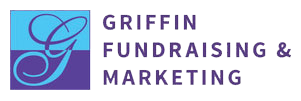I just got a survey in the mail from a nonprofit I donate to once or twice a year. It says it’s an annual survey of all it’s close friends. It also specifically says that amid the current pandemic, my input is very important as “we attempt to navigate through some tough challenges.”
To me, this is a very smart move for this small nonprofit. Instead of guessing at what donors/volunteers want from their favorite nonprofit, they took the time to ask. Taking the time to ask and get feedback streamlines programs, fundraising strategies and marketing later on. It is a very efficient exercise to spend time on planning the plan now and then focusing on what the donor/volunteer/member wants throughout the year.
As we all search for the “new normal” it occurred to me that assuming we (the nonprofit leadership and staff) know what the “new normal” looks like for our donors and other stakeholders is dangerous to the recovery of the nonprofit sector. For example, assuming that your nonprofit should “press pause” on your fundraising annual plan or kicking off a new service or program without getting feedback from those who might support it would be detrimental to the staff who would run it, the participants who would use that program or service and the donors who are passionate about impacting their communities.
Create the time to “take the temperature” of your donors/volunteers and participants before forging ahead on a campaign or program that you think fits the current needs of your constituents. Here are some cost effective ways to implement collecting data and feedback:
- USPS- Much like the nonprofit mentioned, you can send a letter with a short (no more than 15 questions) survey. For best response, send a stamped envelope for the surveyor to send back and an option to fill out the survey online.
- Online Survey- Email an online survey to your constituents to fill out. With some online survey tools you can add a link to your social media platforms as well. Again, keep it short and simple. No more than 5 to 10 questions.
- Facebook Group Poll- Facebook give you the opportunity to poll members of your group. So if your nonprofit has a Facebook group set up, you can poll that audience one question at a time. This is an option for questions and answers that can be shared with anyone since there is no confidentiality.
- Face to Face Surveys and Focus Groups- With these types of survey environments, confidentiality can be provided and more in-depth and sensitive questions can be asked without the risk of ruffling feathers.
In all these instances it is important to uncover quality quantitative data and anecdotal evidence of the needs and direction the stakeholders would like to steer the nonprofit. Data that can set benchmarks and begin the goal setting process. Ancillary benefits typically bubble up from a survey process; volunteer leadership and support from unknown sources are uncovered. Unknown but perceived issues, strengths and weaknesses are also uncovered through asking for feedback.
So while we all start to open our businesses and nonprofits again we must take a pause to consider our new normal, learn from our supporters and move forward, together.
